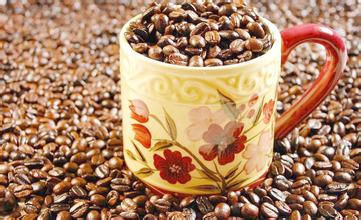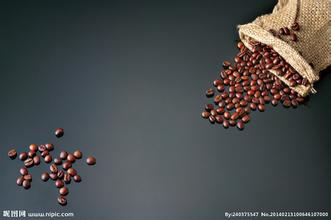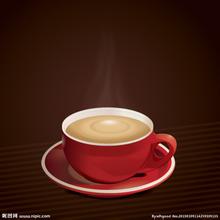What are the basic types of coffee beans?
There are two kinds of coffee beans on the market: Coffea Arabica and Coffea Robusta. Each of them can be subdivided into more varieties of Brazilian coffee fruit (Arabica). Most of the coffee beans in circulation on the market are distinguished by their origin. Here are some of the main producing countries and their famous coffee: Ethiopia (Ethiopia): Harrar, Yirgacheffe, Djimmah Kenya: Kenya AA Tanzania: Kilimanjaro Indonesia: Manning, Java Brazil: Santos (San Tos) Jamaica: blue Mountain Colombia: Costa Rica: Tarrazu Guatemala: Antigua (Antigua) Vivetnam Fruit (Huehuetenango) Mexico Puerto Rico: Yokote (Yauco Selecto) Panama Cuba: Crystal Mountain USA: Kona Coffee Coffee (Cappuccino)
Cappuccino coffee is another kind of espresso, which contains 50% steamed milk and 50% foamed milk. It can also be said to contain 1pm 3 espresso, 1amp 3 steamed milk and 1amp 3 foamed milk. But it also depends on the person who makes the coffee. More steamed milk and less foam are used in many places.
The color of this coffee is like the headscarf worn by Italian monks, so it is named cappuccino (coffee with cream cubes). Accompanied by cinnamon sticks, and then sprinkled with lemon juice, showing a complex flavor. The so-called dry cappuccino (DryCappuccino) refers to the conditioning method with more milk bubbles and less milk. it tastes stronger than milk and is suitable for people with heavy taste. When it comes to wet cappuccino (WetCappuccino), it refers to the practice of fewer milk bubbles and more milk, with milk fragrance overshadowing the thick coffee flavor, which is suitable for those with light taste. The flavor of the wet cappuccino is similar to that of the popular latte. Generally speaking, the taste of cappuccino is heavier than latte. If you have a heavy taste, you might as well order cappuccino or dry cappuccino. If you are not used to the heavy smell of coffee, you can order latte or wet cappuccino. Preparation method: pre-heat the deep-fried coffee, pour it into a small coffee cup, add 2 tablespoons of granulated sugar, float with 1 tablespoon cream, sprinkle with lemon juice or orange juice, and insert the cup with cinnamon sticks instead of spoons. Espresso
The word Italian espresso "Espresso" comes from the Italian word "fast" because Italian espresso is made and delivered to consumers very quickly. Espresso drips slowly from the filter like warm honey, dark reddish brown with a cream content of 10% to 30%. The brewing of espresso can be defined by four M's: Macinazione represents a correct grinding method for mixing coffee; Miscela is a coffee mixture; Macchina is the machine for making espresso; and Mano represents the skilled technique of the coffee maker. Only when each of the four M elements is accurately mastered, the brewed espresso is the best. When drinking espresso, we are quickly impressed by its strong taste and aroma with only a sip, which is the difference between espresso and other coffees. Aroma and concentration are two measures of whether Italian espresso tastes good or not. Mocha coffee (Mocha)
Mocha Coffee Mocha is a port in Yemen. Yemen is located in southwest Asia, in the southern corner of the Arabian Peninsula, is a major coffee producer. At present, the coffee produced in Yemen is the best, followed by Ethiopia's mocha; mocha coffee belt smooth in the acid to strong acid, sweet, unique flavor, containing chocolate flavor; with the temperament of a lady, is a very characteristic pure coffee. Mocha coffee shows a strong New York flavor in a small cup. The preparation method: add 20ml chocolate syrup and very strong deep-fried coffee to the cup, stir well, add 1 tablespoon cream to float on top, peel some chocolate powder for decoration, and finally add some cinnamon sticks. Swiss mocha (Wicklana Coffee), mocha with fresh milk and chocolate syrup, plus fresh cream and chocolate Blue Mountain Coffee (BlueMountain) famous coffee all use origin to describe its characteristics. Climate and soil quality will eventually bring subtle changes to the taste of coffee. The tropical islands of Jamaica have the perfect conditions for growing coffee. Most of the island is covered by mountains, including the Blue Mountains, which are the highest part of the island. The Blue Mountains is a fertile land, where the hot climate, abundant precipitation and high altitude are perfectly combined. Coffee production is the highest in the world at nearly 7500 feet above sea level. There are three grades of coffee in the Blue Mountains of Jamaica: blue Mountain Coffee (BlueMountainCoffee), Alpine Coffee (JamaicaHighMountasinSupremeCoffeeBeans) and Jamaican Coffee (JamaicaPrimeCoffeeBeans). Among them, Blue Mountain Coffee and Alpine Coffee are each divided into two grades. In terms of quality, the order from top to bottom is: blue Mountain 1, Blue Mountain 2, Gaoshan 1, Gaoshan 2, Jamaican Coffee. Coffee grown between 457m and 1524 m above sea level is usually called Blue Mountain Coffee. Coffee grown between 274m and 457m above sea level is often called JamaicaPrimeCoffeeBeans, and the price of blue mountain coffee is several times higher than that of alpine coffee. Coffee is not native to Jamaica. Coffee beans were brought to the island by the Governor in 1728. Blue Mountain Coffee has a very pure taste

Important Notice :
前街咖啡 FrontStreet Coffee has moved to new addredd:
FrontStreet Coffee Address: 315,Donghua East Road,GuangZhou
Tel:020 38364473
- Prev

What are the types and tastes of coffee beans?
The national treasure of Jamaica, Blue Mountain Coffee is perfect in every way, just like wine, and many wineries are now bought by the Japanese. The Japanese have bought most of Jamaica coffee in recent years, so it is very difficult to buy it in the market. It is said that Britain has not been able to buy it for four years. The spending power of the Orientals is really amazing. Jamaica is located in Galle
- Next

The origin of fine coffee beans
The Legend of the Shepherd Legend has it that around the tenth century AD, on the Ethiopian plateau in Africa, there was a shepherd Carl who one day saw goats suddenly excited and excited. He thought it was strange, but after careful observation, he found that the sheep were excited by eating some kind of red fruit.
Related
- Does Rose Summer choose Blue, Green or Red? Detailed explanation of Rose Summer Coffee plots and Classification in Panamanian Jade Manor
- What is the difference between the origin, producing area, processing plant, cooperative and manor of coffee beans?
- How fine does the espresso powder fit? how to grind the espresso?
- Sca coffee roasting degree color card coffee roasting degree 8 roasting color values what do you mean?
- The practice of lattes: how to make lattes at home
- Introduction to Indonesian Fine Coffee beans-- Java Coffee producing area of Indonesian Arabica Coffee
- How much will the flavor of light and medium roasted rose summer be expressed? What baking level is rose summer suitable for?
- Introduction to the characteristics of washing, sun-drying or wet-planing coffee commonly used in Mantenin, Indonesia
- Price characteristics of Arabica Coffee Bean Starbucks introduction to Manning Coffee Bean Taste producing area Variety Manor
- What is the authentic Yega flavor? What are the flavor characteristics of the really excellent Yejasuffi coffee beans?

